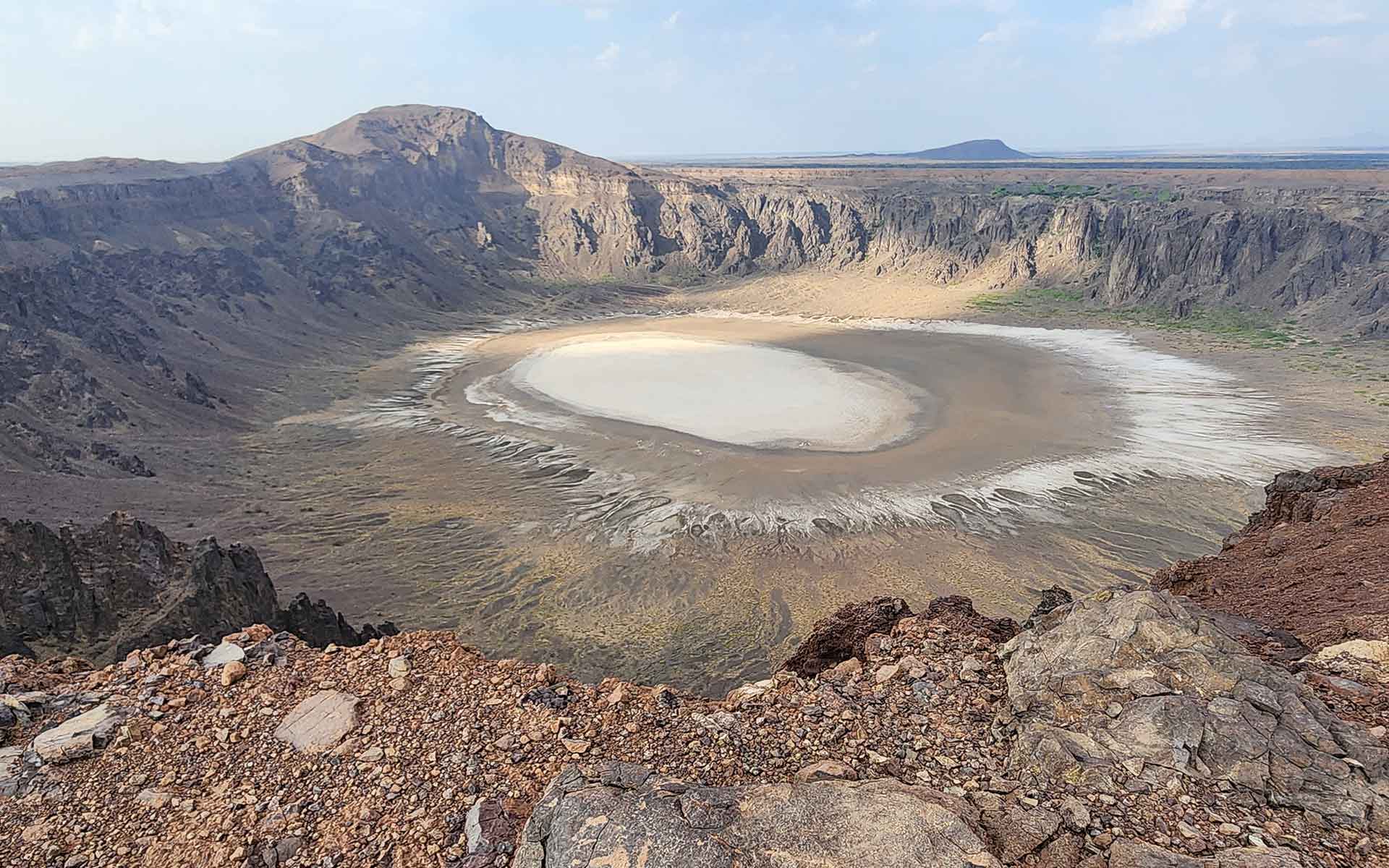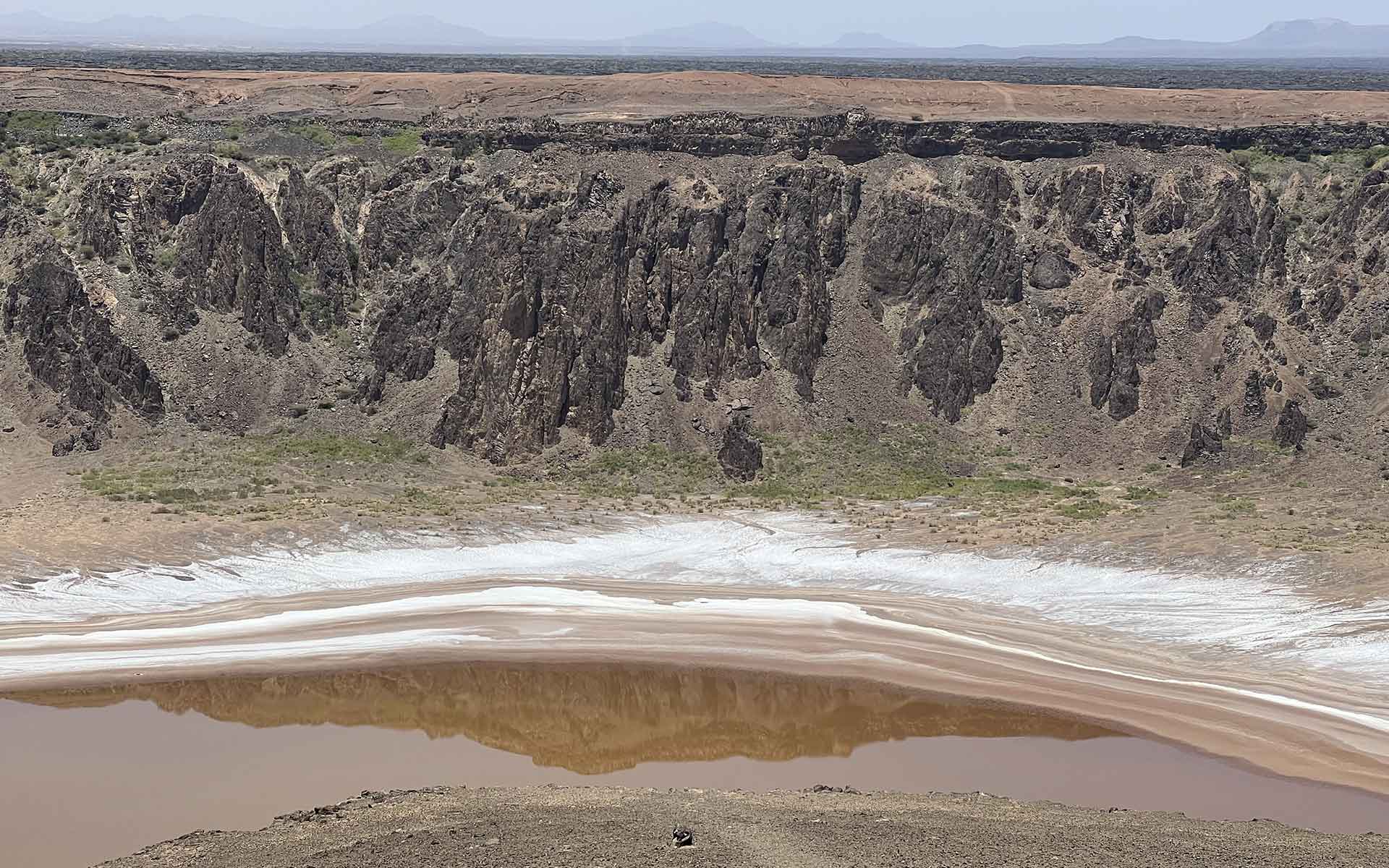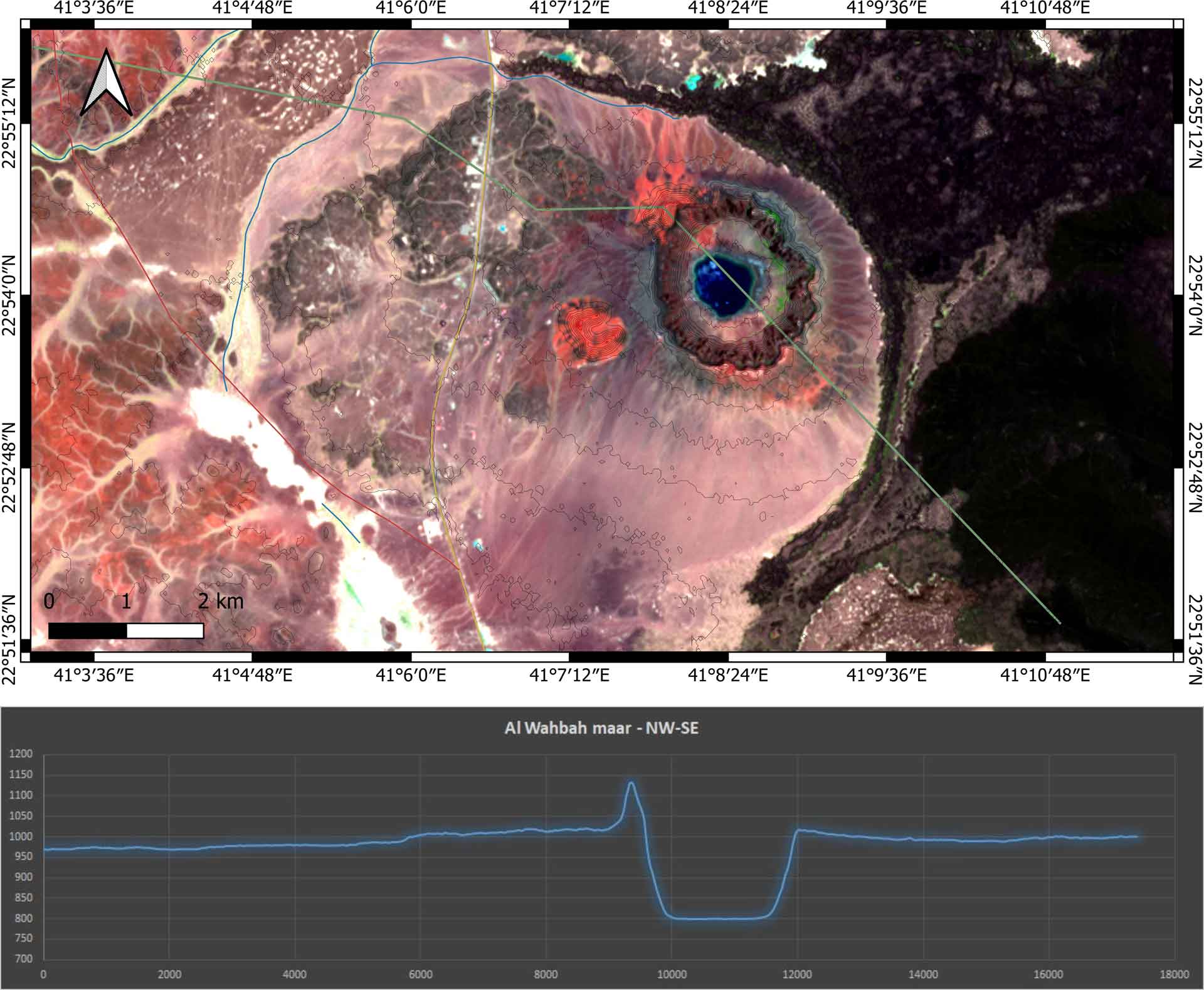
View of Al Wahbah maar cut deeply into the Neoproterozoic basement and pre-existing Pleistocene scoria cones and lava flows.
Geological Period
Pleistocene
Main geological interest
Volcanology
Geomorphology and active geological processes
Location
Middle East, Arabian Peninsula, Saudi Arabia
22°54’02”N, 041°08’22”E
View of Al Wahbah maar cut deeply into the Neoproterozoic basement and pre-existing Pleistocene scoria cones and lava flows.
The world largest, young dry maar volcano, cross cutting older scoria cones.
Al Wahbah is a maar crater that is in an area currently located in hyper arid climate. Al Wahbah formed in the Pleistocene (~1.147 +/- 0.004 Ma) due to explosive interaction of magma and ground water. The sheer size and the thick pyroclastic sequence of the maar suggest the presence of abundant ground water during the Pleistocene reflecting the global changes the Arabian Peninsula experienced in the recent geological past. The perfectly exposed tuff rings and the half sectioned older scoria cone(s) provide a unique geological setting to allow the visitor to see the deposits associated with monogenetic volcanism.
- Geological description
Al Wahbah is one of the largest and deepest Quaternary maar craters on Earth that is also accessible through sealed roads and dedicated visitor facilities. It has perfect exposures of the pre-maar and the maar-forming volcanic successions in its crater wall. It is today a ~2.3 kilometer wide, ~250 meter deep NW-SE-elongated crater surrounded by a scalloped near-perpendicular crater wall that cuts into the Neoproterozoic diorite basement and two Quaternary basanite lava flows. Al Wahbah formed by the explosive interaction of magma and water about 1.15 Ma that deposited pyroclasts from pyroclastic density currents, ballistic curtains and pyroclastic falls. The uniqueness of the exposed crater wall sequence is that deposits resulting from the phreatomagmatic explosions engulfed two pre-maar scoria cones and underlying multiple lava flow units. Al Wahbah uniquely demonstrates that subsequent highly explosive eruptions can take place on a field that showed very different eruption styles thousands of years prior the violent explosive blasts that cut a hole-in-the ground within earlier volcanic landforms. The original tephra ring of the maar acted as an obstacle against younger lava flows nearby vents that were diverted along the margin of the tephra ring creating unique pahoehoe lava surface textures marking the original position of the tuff ring.
- Scientific research and tradition
Scientific research has been conducted only in recent years when the Maar has been subject to studies of its geochronology, geomorphology, geochemistry, lithosphere structure and petrogenetic modelling based on mantle derived nodules from the pyroclastic successions. Geoheritage work has also been conducted with identification of its main geoheritage values.
- Reference
Abdel Wahab, A. et al. (2014) ‘The geology and geochronology of Al Wahbah maar crater, Harrat Kishb, Saudi Arabia’, Quaternary Geochronology, 21, pp. 70–76. Available at: https://doi.org/10.1016/j.quageo.2013.01.008.
Abdel Wahab, A., Ghoneim, M.F. and Abu-Alam, T. (2017) ‘Isotopic, mineralogical, and thermobarometric variations of Al-Wahbah crater (Maklaa Tameya), Kishb area, Saudi Arabia’, Arabian Journal of Geosciences, 10(2), p. 30. Available at: https://doi.org/10.1007/s12517-016-2804-0.
Daoudi, M.A.-A., Al-Doaan, M.I. and Jamil, A. (2018) ‘Geomorphology of the Al Wahbah crater at Harrat Kishb west of the Kingdom of Saudi Arabia’, Arabian Journal of Geosciences, 11(12), p. 297. Available at: https://doi.org/10.1007/s12517-018-3567-6.
Grainger, D.J. (1996) ‘Al Wahbah volcanic explosion crater, Saudi Arabia’, Geology Today, 12(1), pp. 27–30. Available at: https://doi.org/10.1046/j.1365-2451.1996.00006.x.
Moufti, M.R. et al. (2013) ‘Geoheritage values of one of the largest maar craters in the Arabian Peninsula: The Al Wahbah Crater and other volcanoes (Harrat Kishb, Saudi Arabia)’, Central European Journal of Geosciences, 5(2), pp. 254–271. Available at: https://doi.org/10.2478/s13533-012-0125-8.
Moufti, M.R. and Németh, K. (2016) Geoheritage of Volcanic Harrats in Saudi Arabia. Cham: Springer International Publishing (Geoheritage, Geoparks and Geotourism). Available at: https://doi.org/10.1007/978-3-319-33015-0.
- Author(s)
Mohammed Rashad Moufti.
King Abdulaziz University, Jeddah, Kingdom of Saudi Arabia.
Károly Németh.
Saudi Geological Survey, Kingdom of Saudi Arabia.


